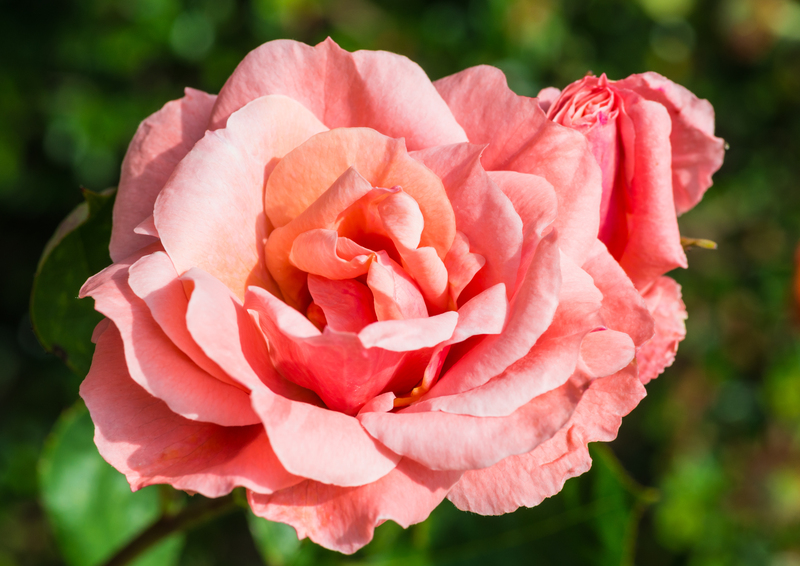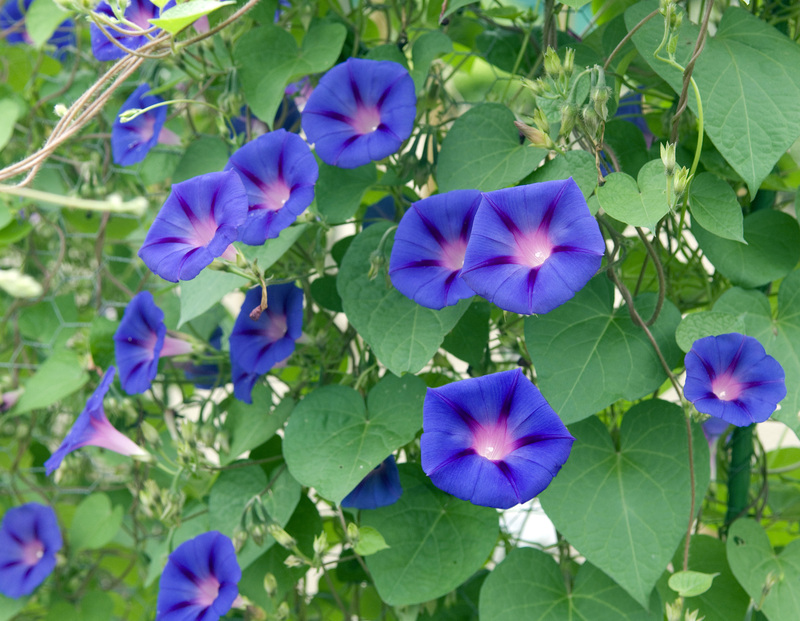The Art of Cultivating a Beautiful Herb Garden
Posted on 10/09/2025
The Art of Cultivating a Beautiful Herb Garden
Discovering the beauty and benefits of an herb garden can transform both your outdoor space and your daily living. Herbs not only provide fresh flavors for your recipes, but they also offer medicinal, aromatic, and decorative qualities. If you've been curious about starting your own lush herbal oasis, you're in the right place. This comprehensive guide will walk you through the art of cultivating a beautiful herb garden, covering everything from planning and design to planting, maintenance, and harvesting.

Why Grow Your Own Herb Garden?
- Fresh and organic herbs at your fingertips
- Enhance your health with home-grown medicinal plants
- Add natural beauty and aroma to your outdoor space
- Reduce your carbon footprint and save money
- Explore therapeutic gardening as a hobby
Whether you're an avid cook, a lover of all things green, or someone seeking relaxation in nature, growing a beautiful herb garden is a rewarding endeavor. Let's delve into the core steps and tips to develop your own enchanting herbal retreat.
Planning Your Herb Garden: Laying the Foundation
Step 1: Choosing the Right Location
The secret to a thriving herb garden lies largely in its location. Most herbs crave bright sunlight, requiring at least 6 hours of direct sunlight daily. Choose a spot in your garden, patio, or balcony that gets ample light and is easily accessible from your kitchen. Convenience encourages frequent harvesting, which in turn promotes vigorous growth.
- Sunlight: Most culinary herbs (basil, rosemary, thyme) thrive in full sun. However, some, like mint and parsley, tolerate partial shade.
- Soil: Herbs need well-draining soil. If your native soil is heavy clay, consider raised beds or large pots with a quality potting mix.
- Water access: Position your herb patch near a water source, so regular watering is convenient.
Step 2: Designing Your Herb Garden
Herb gardens can be formal, informal, large, or compact. Plan your design by considering:
- Garden Type:
- Traditional in-ground plots
- Raised beds
- Vertical or wall-mounted gardens
- Container arrangements
- Windowsill or kitchen counter herb gardens
- Shape and Structure: For a classic touch, design geometric beds edged with bricks or stones. For a whimsical look, meander your paths and mix in flowers.
- Grouping: Group herbs with similar soil, water, and light requirements. For instance, Mediterranean herbs like rosemary and lavender love drier conditions, while parsley and mint prefer more moisture.
Using garden markers or distinctive pots adds charm and helps you organize your herb garden for both aesthetics and function.
Selecting the Best Herbs for Your Beautiful Garden
When selecting herbs for your garden, consider both *utility* and *appearance*:
- Culinary Favorites: Basil, parsley, thyme, oregano, rosemary, sage, cilantro, dill, mint, chives.
- Medicinal Herbs: Chamomile, echinacea, lemon balm, calendula, feverfew.
- Aromatic and Ornamental: Lavender, scented geraniums, lemon verbena.
Pro Tip: Mix annuals (basil, cilantro, dill) and perennials (thyme, oregano, chives, sage, mint). This ensures perennial structure and texture, while annuals add vibrant seasonality.
Companion Planting with Herbs
Many herbs benefit from being planted alongside certain companions. For example:
- Basil repels aphids and can improve the growth and flavor of tomatoes.
- Chives deter pests from carrots and lettuce.
- Rosemary helps beans and cabbage by repelling harmful insects.
Integrating herbs into your vegetable or flower beds enriches biodiversity and cultivates a healthier garden ecosystem.
Starting Your Herb Garden: Seeds, Seedlings, or Cuttings?
You can begin cultivating your herb garden using seeds, young plants (called "starts" or seedlings), or cuttings. Each method has its advantages:
- Seeds: Cost-effective, wide variety, but need patience and time to grow.
- Seedlings: Ideal for beginners, easier and faster way to jump start your herb garden.
- Cuttings: Propagating from other plants is efficient, especially for perennials like mint and rosemary.
Tip: Start seeds indoors in late winter/early spring, or buy healthy, pest-free seedlings from a trusted nursery when the last frost has passed.
Planting Techniques for a Lush Herb Garden
Soil Preparation
The art of successful herb cultivation begins below the surface. Prepare your planting area with:
- Loosening and aerating the soil
- Mixing in organic compost and a touch of sand for Mediterranean herbs
- Ensuring soil pH stays between 6.0 and 7.0 for most herbs
Spacing and Layout
Give herbs enough room to grow. Overcrowding causes poor airflow and increases disease risk. Follow spacing guidelines on seed packets or plant labels:
- Basil, cilantro, dill: 8-12 inches apart
- Rosemary, sage, oregano: 18-24 inches apart
- Mint: Plant in containers to prevent spreading
Planting in Pots and Containers
For balconies or small spaces, cultivating a container herb garden is perfect. Select pots with drainage holes. *Use high-quality potting soil, and water more frequently as containers dry out faster than garden beds.*
Maintaining Your Herbal Haven
Watering Tips
- Most herbs prefer soil that is moist but not waterlogged.
- Water in the morning to reduce evaporation and disease risk.
- Allow the soil surface to dry slightly before re-watering.
Fertilizing Your Herbs
- Over-fertilizing leads to lush leaves with weak flavor--less is more.
- Incorporate compost or organic liquid feed once a month during growth periods.
Pest and Disease Prevention
- Promote good airflow by proper spacing and regular harvesting.
- Check leaves weekly for pests like aphids and spider mites.
- Use neem oil or insecticidal soaps as eco-friendly remedies.
- Encourage beneficial insects (ladybugs, lacewings) by also planting alyssum and dill.
Pruning and Harvesting Techniques
- Pinch back and snip regularly to encourage bushier growth and prevent flowering (bolting), which can make herbs bitter.
- For leafy herbs, harvest by cutting stems just above a leaf pair.
- For woody perennials, cut back 1/3 after flowering to maintain shape and vigor.
Creative Ideas for a Beautiful, Functional Herb Garden
Designing for Visual Appeal
- Mix differing heights, textures, and colors. Tall rosemary contrasts beautifully with sprawling thyme or creeping oregano.
- Include flowering herbs like lavender and calendula for splashes of color.
- Plant aromatic pathways--line walkways with fragrant herbs such as thyme & chamomile.
- Add decorative elements: stone markers, vintage containers, mosaic stepping stones, or small statues.
Themed Herb Gardens
- Pizza Garden: Oregano, basil, thyme, parsley, rosemary
- Tea Garden: Mint, chamomile, lemon balm, lemongrass, stevia
- Herbal Medicine Garden: Echinacea, calendula, feverfew, sage
- French Potager: Mix culinary herbs with colorful edible flowers
Vertical Herb Gardens
If you're short on space, try cultivating your herb garden vertically. Use wall-mounted containers, hanging shoe organizers, or trellises for vine-like herbs. Vertical gardens not only maximize limited space but also create a stunning focal point.
Extending Your Harvest: Preserving and Using Herbs
Drying and Freezing Herbs
- Tie small bunches and hang upside down in a dry, airy room.
- Faster: Dry herbs in a food dehydrator or a low oven.
- Freeze chopped herbs in ice cube trays with olive oil or water for year-round freshness.
Infusions and Herbal Products
- Make homemade infused oils and vinegars with basil, rosemary, or thyme.
- Craft herb butters, pestos, or flavored salts.
- Use soothing herbs (lavender, chamomile) for teas or natural skincare.
Common Mistakes to Avoid in Herb Gardening
- Overwatering, leading to root rot
- Overcrowding plants, reducing airflow and promoting disease
- Ignoring sun requirements--herbs love light!
- Using chemical pesticides--herbs are best enjoyed naturally grown
- Letting annuals flower too soon--they turn bitter and stop producing leaves
Summary: The art of cultivating a beautiful herb garden lies in understanding your plants, nurturing the soil, and allowing yourself some creative expression. With patience and attentive care, you'll be rewarded with a lush, aromatic, and functional herbal paradise that will elevate your cooking, health, and joy.

Frequently Asked Questions
- Can you grow a herb garden indoors?
Absolutely! Many herbs thrive in pots on sunny windowsills just water frequently and provide at least 6 hours of sunlight or supplement with grow lights. - What herbs grow well together?
Group Mediterranean herbs (rosemary, thyme, oregano, sage, lavender) together. Moisture-loving herbs (mint, chives, parsley, basil) prefer similar conditions. - How do I keep pests away from my herb garden?
Regular checks, encouraging beneficial insects, and natural sprays like neem oil are effective. Planting garlic or marigold nearby can also repel pests. - How often should I harvest?
Frequent harvesting encourages new growth. For leafy herbs, take up to one-third of the plant at a time; do not strip bare.
Start Your Journey to a Gorgeous Herb Garden Today
With these tips and a little passion, cultivating your own beautiful herb garden is well within reach. From planning and planting to harvesting and savoring, each step in your herb gardening journey will reward you with lush foliage, wonderful scents, and fresh flavors for every season. Happy gardening!



